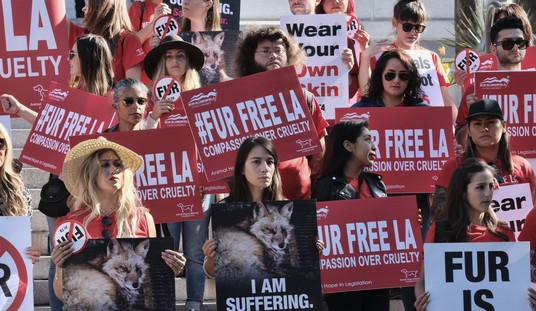The past year’s tea party movement is not the first popular uprising against an overtaxing, encroaching, economy-stifling government. Though its past version seems not to have involved much in the way of street demonstrations, it may have been even stronger than the modern phenomenon, at least so far. As noted later, it will be difficult to exceed its electoral performance.
No less a luminary that Michael Barone rediscovered this largely forgotten history while creating his latest book, Our Country: The Shaping of America from Roosevelt to Reagan. Barone, correctly described as “one of the most learned political observers of our time,” was the first person to characterize the Obama administration’s modus operandi as “Gangster Government” when he wrote in May of last year about how it bullied and shortchanged disfavored secured creditors during Chrysler’s bankruptcy proceedings. His April 21, 2010, column (“Gangster Government becomes a long-running series”) excoriates the so-called financial regulation bill currently under consideration in the Senate as “the channeling of vast sums from the politically unprotected to the politically connected.” One look at the expected workings and powers of the Financial Services Oversight Council the bill envisions confirms Barone’s assessment.
Visits to various items published during 1937 and 1938 reveal that the anti-New Deal sentiment Barone learned of had legs — and impact.
President Obama’s stimulus bill passed in February of last year is what ignited an initial storm of protest that has been followed by a growing wave of political activism. In 1937, the equivalent spark was newly reelected President Franklin Delano Roosevelt’s February 1937 proposal, buttressed by a March fireside chat, to pack the Supreme Court with six additional justices friendly to the New Deal’s statism and hostile to the original intent of the Constitution. The fighting words from his address were these: “We have, therefore, reached the point as a nation where we must take action to save the Constitution from the Court and the Court from itself.” He didn’t lack nerve, did he?
It wasn’t long before it became obvious that FDR had vastly overplayed his hand, as Obama would do 72 years later. After an initial lull, public reaction was furious. The proposal was denounced by much of the press, in letter-writing campaigns that ran 9-to-1 against, and even by Gallup polls that never showed majority support. This was a first for a president who had gotten his own way, except with the Court, during the previous four years. A formerly invincible politician had become a bit vulnerable, releasing more than a little pent-up frustration.
It’s virtually impossible without having been there to determine which outrages most set off anti-New Dealers — a group, by the way, that included plenty of Democrats as well as conservatives and Republicans. Here are a few that probably were near the top of the list:
- There was the utopian community of Greenbelt, Maryland, which was promoted as a place where “the profit motive does not exist,” and “Uncle Sam is everybody’s landlord.” In a foreshadowing of the current stimulus plan’s cost per job “created or saved” excess, spending on the supposedly “low cost” project worked out to be more than $16,000 per house, or $250,000 in what’s left of today’s dollars.
- The government had gone headlong into many industries, either co-opting or crowding out private players. A Victoria, Texas, newspaper in June 1938 noted that “10,000 WPA (Works Progress Administration) units are making clothing, and … more than 100,000,000 garments have been produced.” It was also going to extraordinary lengths to prop up markets, buying “31,500 tons of dried prunes, 500,000 cases of grapefruit juice, and perhaps even enough wheat to cut down somewhat the tremendous surplus that looms.”
- You want corruption? Apparently there was plenty of it. A Google News Archive search on [“New Deal” corruption] (typed as indicated within quotes) for 1937-1938 returns 246 items, many with dozens of “related” items. The Day of New London, Connecticut, carried an August 17, 1937, story by David Lawrence describing “‘the Teapot Dome scandal’ of the Roosevelt administration,” where “everything possible is being done by the Democratic chieftains to prevent an investigation of the ‘racket’ by which corporations were shaken down and forced to pay tribute to the Democratic national committee in violation of the corrupt practices act.”
As would be expected, the intellectual elitism used today to defend Obamanomics was also on display during the New Deal. After allowing that “there is a great deal more anti-New Deal sentiment among smaller business men than the president and his counselors have conceded in their public utterances,” a rabbi writing a February 12, 1938, column in the Pittsburgh Post-Gazette proceeded to characterize them as “little” businessmen “offer(ing) nothing constructive” while claiming, “There is no knowledge in them.” Echoing what we hear and see today directed at the financial and housing industries and George W. Bush, he also wrote that “the business world has developed no constructive program that will prevent a return to 1929-1932.”
Republicans. led by New York gubernatorial candidate Thomas Dewey, played up the corruption angle in the run-up to the November 1938 congressional elections and, in an ACORN echo, even warned that relief recipients were being cajoled into voting for Democrats.
On Election Night in 1938, an overwhelming Democratic majority (334-88 in the House, 76-17 in the Senate) shrunk considerably to 252-177 in the House and 69-23 in the Senate. The GOP gained 89 seats, while Democrats lost 82. After factoring in the considerable number of Democratic anti-New Dealers, it was clear that FDR’s rubber-stamp days were largely over. The New York Times, which had endorsed Roosevelt in 1932 and 1936, blubbered about how “party control and party responsibility have been restored to a more normal place in American government.”
R. Emmett Tyrell Jr. at the American Spectator summarizes Barone’s take on what became of the late-1930s push-back:
Barone now believes that had World War II not arrived this late-1930s tea party manifestation would have supported a stiff challenge to FDR’s precedent-breaking third term.
Indeed, despite the world war and the dangers it was posing here, Roosevelt’s 1940 winning margin of 55%-45%, while wide by modern standards, was far narrower than his victories in 1932 (by 17%) and 1936 (by 24%).
The strenuous objections manifested during the early stages of FDR’s second term to his and the federal government’s increasingly authoritarian tendencies explain an item of fallout from his administration that most people have never quite understood. Posed as a question, it is this: Why, if historians are correct about the population’s general reverence for Roosevelt when he served, did Congress pass the 22nd Amendment only 19 months after the end of World War II, thereby ensuring that no future president could ever run for a third term in office? Further, why was the amendment able to attain its required ratification by three-quarters of the states just four years later, proving that it was far more than mischievous Republicans and conservatives who supported it?
Answer: Roosevelt’s legendary popularity with the masses is a convenient urban legend not supported by history. Despite FDR’s generally fine leadership during World War II, few Americans at the time wanted to risk a return of his New Deal statism.
Can the popular uprising of 2009-2010 known as the tea party movement outdo its 1930s counterpart? Perhaps, but the modern version will have to overcome two sets of enemies: the left itself, and the considerable collection of control-obsessed, counterproductive, go-along get-along dingbats on the right who would rather empty their treasuries than see genuine sensible conservatives prevail.









Join the conversation as a VIP Member